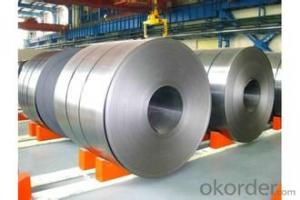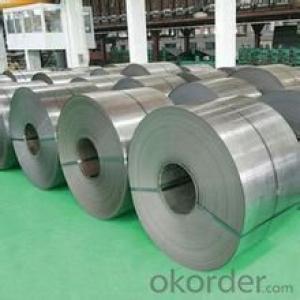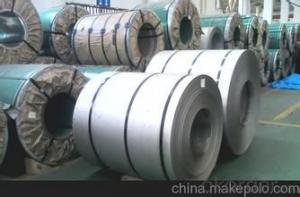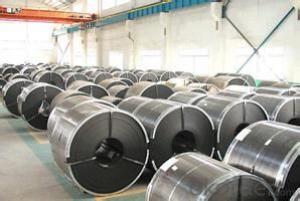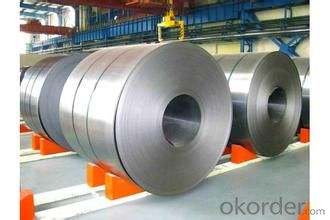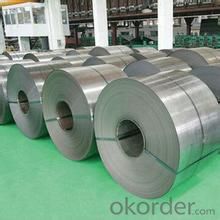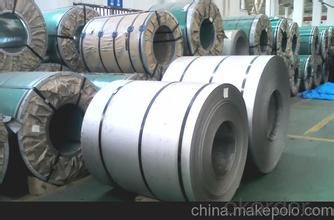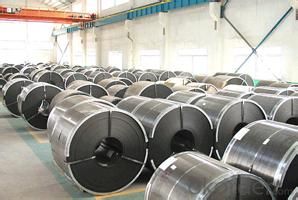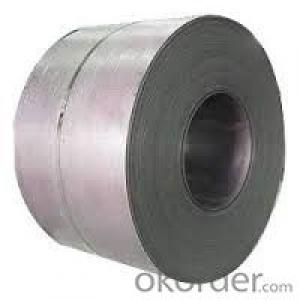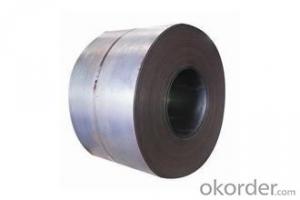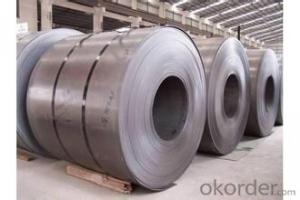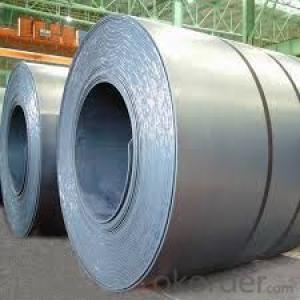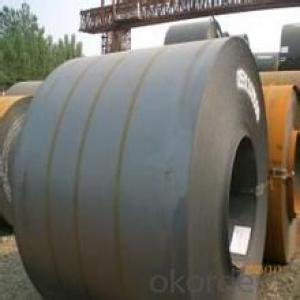Hot rolled Steel Sheet/Strip/Sheet /Steel - G3131-SPHC
- Loading Port:
- Tianjin
- Payment Terms:
- TT OR LC
- Min Order Qty:
- 100 m.t.
- Supply Capability:
- 500000 m.t./month
OKorder Service Pledge
OKorder Financial Service
You Might Also Like
Description:
hot rolled steel is a production which not easy rust,acid resistance and corrosion resistance,so it is widely
used in light industry,heavy industry,daily necessities and the decoration industry.
Specification:
Tensile strength σb (MPa) ≥ 520
the conditions yield strength σ0.2 (MPa) ≥ 205,
elongation δ5 (%) ≥ 40
Reduction of ψ (%) ≥ 50,
hardness: ≤ 187
HB; ≤ 90
HRB; ≤ 200H
Image:
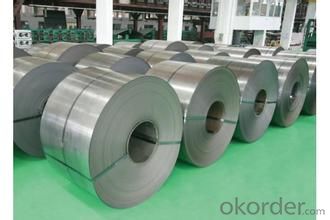
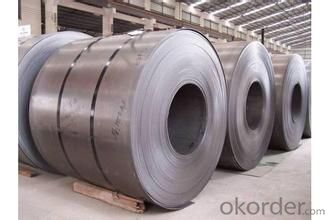
Application:
Our Hot-Rolled Steel Sheets and Coils are applied to a wide range of uses such as automobile, electrical appliance, machinery manufacturing, container manufacturing, shipbuilding, bridge, pipeline, and receive high acclaim from our customers for its excellent quality.
We can ensure that stable quality standards are maintained, strictly meeting both market requirements and customers’ expectations. Our products enjoy an excellent reputation and have been exported to Europe, South-America, the Middle-East, Southeast-Asia, Africa and Russia etc.. We sincerely hope to establish good and long-term business relationship with your esteemed company.
- Q: How are steel coils inspected for formability using forming tests?
- Steel coils are inspected for formability using forming tests to assess their ability to be shaped into desired forms without any defects or failures. These tests are conducted to evaluate the material's mechanical properties and determine its suitability for specific applications. Forming tests involve subjecting the steel coil to various forming operations, such as bending, deep drawing, or stretch forming. The coil is typically cut into specified dimensions and then subjected to these operations using specialized equipment. The key objective is to simulate the actual forming process that the steel will undergo in real-world applications. During the forming tests, several parameters are closely monitored. These include the amount of force or load applied, the rate of deformation, and the resulting strain or deformation experienced by the steel. Additionally, the coil's response to these operations is observed, including any visible defects like cracks, fractures, or surface imperfections. By carefully analyzing the performance of the steel coil during the forming tests, various formability characteristics can be determined. These include the material's resistance to deformation, its ability to withstand strain without failure, and its tendency to exhibit defects under specific forming conditions. The results obtained from these tests provide valuable insights into the suitability of the steel coil for specific forming processes and applications. Moreover, advanced techniques such as digital image correlation and strain analysis may be employed to precisely measure and evaluate the strain distribution across the steel coil's surface. These techniques help identify regions of the coil that experience higher strain and potential failure points. In conclusion, steel coils are inspected for formability using forming tests that simulate the actual forming processes they will undergo. These tests assess various formability characteristics, including the material's resistance to deformation and its propensity for defects. The results obtained from these tests aid in determining the suitability of the steel coil for specific applications and guide the selection of appropriate forming parameters.
- Q: What are the factors affecting the lifespan of steel coils?
- There are several factors that can affect the lifespan of steel coils, including the quality of the steel used, the level of protection against corrosion, the storage and handling conditions, the frequency and severity of mechanical stress, and the effectiveness of maintenance and preservation practices.
- Q: Will any modified choke or improved Cylinder choke be safe to use with steel shot? If these are safe, which is better for duck or goose hunting?
- This Site Might Help You. RE: Choke tubes for steel shot? Will any modified choke or improved Cylinder choke be safe to use with steel shot? If these are safe, which is better for duck or goose hunting?
- Q: I have a 03 jeep wrangler and looking to upgrade to black wheels. I was wondering if the difference between steel and alloy wheels is worth paying double.
- steel is steel is steel- they will always be heavy you would have to weigh them to find out--NOW if you are going to alloy wheels they are typically aluminum and yes they are lighter -this is good because it lightens your un-sprung weight and is less harmful to your suspension-good for your auto
- Q: What are the safety regulations for steel coil production facilities?
- Safety regulations for steel coil production facilities vary depending on the specific country or region, but there are some common safety measures that are typically implemented in these facilities. One key safety regulation is the proper training and education of employees. All workers in steel coil production facilities should be trained on the potential hazards they may encounter, as well as the proper safety procedures to follow. This includes training on handling heavy machinery, operating cranes or forklifts, and understanding the risks associated with working in a high-temperature environment. Another important safety regulation is the maintenance and inspection of equipment. Regular inspections of machinery and equipment should be conducted to ensure they are in proper working condition and do not pose any safety risks. Furthermore, maintenance procedures should be implemented to address any issues or malfunctions promptly. Fire safety is also a crucial aspect of safety regulations in steel coil production facilities. Fire prevention measures such as the installation of fire alarms, sprinkler systems, and fire extinguishers should be in place. Regular fire drills should also be conducted to ensure that all employees are aware of the evacuation procedures and can respond quickly and effectively in case of a fire emergency. Personal protective equipment (PPE) is another vital safety requirement in steel coil production facilities. Employees should be provided with appropriate PPE such as safety glasses, helmets, gloves, and steel-toed boots to protect them from potential hazards such as falling objects, sharp edges, and high temperatures. Additionally, safety regulations often require the implementation of safety barriers and guards around machinery and equipment to prevent accidents and injuries. This includes safety gates, railings, and protective covers to restrict access to hazardous areas and prevent unauthorized entry. Regular safety audits and inspections should be conducted by relevant authorities or safety professionals to ensure compliance with safety regulations. Companies should also encourage a culture of safety by promoting open communication about safety concerns, providing safety training and refresher courses, and rewarding employees for their adherence to safety protocols. It is important to note that safety regulations may vary from one jurisdiction to another, and it is always advisable to consult the specific regulations applicable in the country or region where the steel coil production facility is located.
- Q: How are steel coils used in the production of electrical resistors?
- Steel coils are used in the production of electrical resistors as the core material for winding wire around. The coils provide a stable structure, allowing the wire to be tightly wound and creating the necessary resistance for regulating electric current flow.
- Q: What is the role of steel coils in the production of conveyors?
- Steel coils play a crucial role in the production of conveyors as they are used to create the framework or structure of the conveyor belts. The coils are formed into a continuous loop, which provides strength, durability, and flexibility to the conveyor belts. Additionally, the steel coils ensure smooth movement and support heavy loads, making them essential components in conveyor manufacturing.
- Q: How are steel coils used in the production of metal facades?
- The production of metal facades relies on steel coils as a vital element. These coils, typically crafted from high-quality steel, serve as the raw material for manufacturing different components of metal facades, including panels, cladding, and roofing sheets. During the production process, the steel coils go through a series of procedures. Initially, the coils are uncoiled and flattened to achieve a smooth and uniformly thick surface, ensuring the desired texture for the metal facades. Subsequently, the flattened coils are cut into specific lengths and widths, tailored to meet the design requirements of the facades. After the cutting process, the steel sheets undergo various surface treatment techniques, such as cleaning, pickling, and coating. These treatments are crucial in enhancing the durability and corrosion resistance of the metal facades. The coatings are applied using different methods, such as galvanization, powder coating, or painting, depending on the desired finish and level of protection needed. Once the surface treatment is completed, the steel sheets are shaped and formed into the desired profiles for the metal facades. This can involve processes like roll forming, bending, or stamping, depending on the complexity of the design. These shaping processes give the metal facades their distinct appearance and structural integrity. Finally, the formed steel sheets are assembled and installed onto the building structure to create the metal facade. The installation techniques employed include welding, riveting, or adhesive bonding, depending on the specific project requirements. Thus, the steel coils play a critical role in providing the necessary raw material for the production of metal facades. These facades not only enhance the aesthetic appeal of buildings but also provide protection and durability against harsh weather conditions. To summarize, steel coils are indispensable in the production of metal facades as they serve as the raw material for various components. They undergo surface treatments to enhance durability, are shaped into desired profiles, and finally, installed to create the metal facade.
- Q: What are the different methods of blanking steel coils?
- There are multiple techniques utilized for blanking steel coils, including: 1. Shearing: To achieve the desired size and shape, shearing involves cutting the steel coil using a shear or a set of shears. This method is commonly used as it is fast and cost-effective, particularly suitable for thin to medium-thickness steel coils. 2. Laser cutting: Employing a high-powered laser beam, laser cutting is a precise and efficient method for cutting through steel coils. It is ideal for complex shapes and thick steel coils, providing clean and accurate cuts. Consequently, it is favored for high-quality blanking. 3. Waterjet cutting: A versatile method, waterjet cutting employs a high-pressure stream of water mixed with an abrasive material to cut through steel coils. It generates no heat and can cut through various materials, including steel. It is particularly suitable for cutting thick steel coils and intricate shapes and designs. 4. Stamping: This method involves pressing a die into the steel coil to cut out the desired shape. It is commonly used for high-volume production as it can rapidly cut multiple pieces simultaneously. Stamping is suitable for cutting simple shapes and is often combined with other processes, such as shearing or laser cutting, for more complex shapes. 5. Plasma cutting: Plasma cutting utilizes a high-velocity jet of ionized gas to cut through the steel coil. It is suitable for cutting thick steel coils and can handle a wide range of materials. Known for its speed and versatility, plasma cutting is a popular method for blanking steel coils. These methods of blanking steel coils offer various benefits depending on project requirements, such as speed, precision, complexity of shapes, and material thickness. The selection of the method relies on factors like cost, production volume, desired quality, and turnaround time.
- Q: I want to get one of these knives but I am having trouble deciding which is the best overall knife??ThanksSOG Trident tigerSOG Vulcan TantoSOG Bi-Polar (Serrated)Cold Steel ScimitarCold Steel Recon 1
- Look up a knife maker called Bench Made, the knife i recommend is the CQC7 its a tanto tip half serrated blade all low glare black folding with pocket clip. it has one of the hardest steel blades. You need to learn about steel hardness the harder the blade the sharper it can get and the harder the longer it will hold a edge. but hard steel can get brittle it can snap now as softer steel will bend and dull quick. the bench-made CQC7 goes for around $100 or that ball park...enjoy read some about the knife and think about what you want it for....my CQC7 can cut a coat hanger by pulling the serrate across the hanger!!
Send your message to us
Hot rolled Steel Sheet/Strip/Sheet /Steel - G3131-SPHC
- Loading Port:
- Tianjin
- Payment Terms:
- TT OR LC
- Min Order Qty:
- 100 m.t.
- Supply Capability:
- 500000 m.t./month
OKorder Service Pledge
OKorder Financial Service
Similar products
Hot products
Hot Searches
Related keywords
